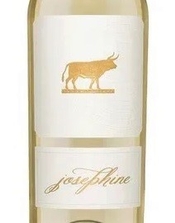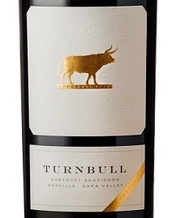Sometimes before tasting a wine, assuming that I am not tasting it blind, I glance at the technical sheet for that wine and imagine how the wine will taste. For a mid- to high-end Sauvignon Blanc from California, these days I expect to read about various clones that produce the wine, and maybe some portion of Semillon. I expect to read about stainless steel fermentation at a range of temperatures, possibly oak aging and perhaps a mix of vineyards from different altitudes. These comments will support findings of aroma complexity, fruitiness, freshness and crispness in differing degrees.
But the tech sheet for the 2020 Turnbull “Josephine” Sauvignon Blanc from the Oakville district of Napa Valley told me that the wine is entirely Sauvignon Blanc (nothing about clones) and that it is aged in concrete (52 percent) with French oak for 38 percent and Italian terracotta amphorae for 10 percent (not stainless steel). Likewise, the tech sheet for the 2018 Turnbull Oakville Cabernet Sauvignon Reserve reveals no blending of Merlot or Petit Verdot, but simply 100 percent Cabernet Sauvignon and 100 percent French oak aging. And yet both wines express nuance and complexity, seemingly born that way.
The good genes behind these wines, the press material explains, is the richness of the estate’s vineyard holdings, 110 acres in Oakville divided among three vineyards, one of which carries vines from the pre-Prohibition era. Turnbull’s winemaker and grower, Peter Heitz, sourced the Josephine Sauvignon Blanc from two of the estate vineyards, picking the grapes as early as 19° Brix (sugar ripeness) up to a moderate 23° Brix, and fermenting the juice in as many as 20 small lots in concrete, neutral oak and terracotta. He sourced the Cabernet Sauvignon Reserve from two vineyards, tasting the wines barrel by barrel to determine the final blend.
When I finally tasted the wines, I was delighted with them — the Sauvignon Blanc for its textural richness and flavor complexity within a classic high acid, moderate alcohol structure, and the Cabernet Sauvignon for its restraint.
 Here’s what to expect when you taste the 2020 Turnbull “Josephine” Sauvignon Blanc. The aroma on first sniff is typically “green,” suggesting lime and grassy herbal notes; very quickly, the complexity emerges, shifting from orange to tropical fruit notes of pineapple, with a floral note, smokiness and a mineral note suggesting a wet sidewalk. In your mouth, the flavors include green apple, passion fruit, guava, blood orange, with a side of tangy minerality. Apart from its aromas and flavors, this wine is dry and full-bodied, with high acidity and texture that’s rich and creamy despite that high acidity. The acid and textural richness play off each other so that you are tasting a wine that’s gentle and soft and yet energetic at its core. Quite a feat of winemaking.
Here’s what to expect when you taste the 2020 Turnbull “Josephine” Sauvignon Blanc. The aroma on first sniff is typically “green,” suggesting lime and grassy herbal notes; very quickly, the complexity emerges, shifting from orange to tropical fruit notes of pineapple, with a floral note, smokiness and a mineral note suggesting a wet sidewalk. In your mouth, the flavors include green apple, passion fruit, guava, blood orange, with a side of tangy minerality. Apart from its aromas and flavors, this wine is dry and full-bodied, with high acidity and texture that’s rich and creamy despite that high acidity. The acid and textural richness play off each other so that you are tasting a wine that’s gentle and soft and yet energetic at its core. Quite a feat of winemaking.
Winemaker Heitz believes that it is his practice of harvesting at a range of ripeness levels that creates the layered textural nuance and sophistication of the wine.
 For the 2018 Turnbull Cabernet Sauvignon Reserve Oakville, the aroma and flavors are, to me, classic: dark plum, red cherries and berries, coffee, smoke and graphite. What’s particular here is that these aromatics are not exaggerated; they are fresh, precise and subdued. The wine is full-bodied and truly dry with soft, chalky tannins that are well-integrated throughout the taste. The wine fills your mouth with understated, focused character and an impressive concentration of fruit purity that is not at all showy. Tasting this wine, I think of the classic wisdom that Cabernet Sauvignon often needs some Merlot in the blend, to fill-in the mid-palate. But here, the mid-palate is a seamless continuation of the wine’s velvety texture and fruit purity. Peter Heitz credits the higher-altitude Leopoldina Vineyard, which accounts for 57 percent of this wine, for the structure, texture and mid-palate depth.
For the 2018 Turnbull Cabernet Sauvignon Reserve Oakville, the aroma and flavors are, to me, classic: dark plum, red cherries and berries, coffee, smoke and graphite. What’s particular here is that these aromatics are not exaggerated; they are fresh, precise and subdued. The wine is full-bodied and truly dry with soft, chalky tannins that are well-integrated throughout the taste. The wine fills your mouth with understated, focused character and an impressive concentration of fruit purity that is not at all showy. Tasting this wine, I think of the classic wisdom that Cabernet Sauvignon often needs some Merlot in the blend, to fill-in the mid-palate. But here, the mid-palate is a seamless continuation of the wine’s velvety texture and fruit purity. Peter Heitz credits the higher-altitude Leopoldina Vineyard, which accounts for 57 percent of this wine, for the structure, texture and mid-palate depth.
2020 Turnbull “Josephine” Sauvignon Blanc, Napa Valley-Oakville, 92 Points
2018 Turnbull Cabernet Sauvignon Reserve, Napa Valley-Oakville, 94 Points
